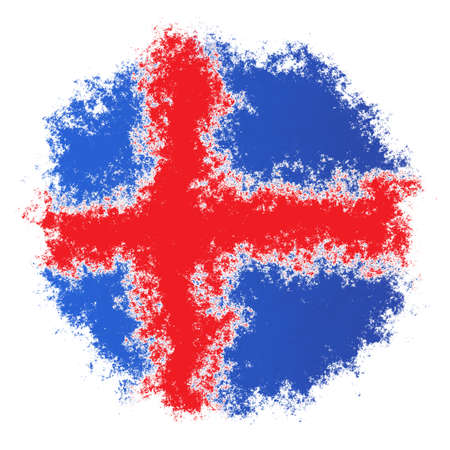Introduction to Hand Shapes in British Society
Hand shapes and gestures are woven into the fabric of daily life across the United Kingdom, serving as both subtle and overt modes of communication. From a friendly wave to the distinct “V-sign,” these physical cues carry deep social meanings, reflecting the unique blend of history, regional identity, and etiquette that characterises British society. The way Britons use their hands—whether during conversation, greetings, or even moments of silence—offers fascinating insights into national values such as politeness, reserve, and humour. Understanding hand shapes in this context requires not only a look at local customs but also an appreciation for how genetics and cultural evolution have shaped these behaviours over centuries. As we explore the science behind hand shapes in the British Isles, it becomes clear that our hands are more than tools—they are storytellers, expressing heritage and unspoken societal rules that continue to evolve within modern Britain.
2. Genetics: The Biological Blueprint
Understanding hand shapes begins with the study of genetics, which serves as the biological blueprint for all human traits, including those observable in the hands. In the context of the British Isles—a region with a rich tapestry of genetic influences due to centuries of migration and settlement—hand shape inheritance provides an intriguing glimpse into both our evolutionary past and our present diversity.
How Hand Shape Traits Are Inherited
Hand shapes are determined by a combination of multiple genes rather than a single genetic factor. This polygenic inheritance means that features such as finger length, palm width, and overall hand proportions are shaped by the interaction of various genetic markers passed down from both parents. Common hereditary hand traits include:
| Trait | Genetic Influence | Prevalence in British Isles |
|---|---|---|
| Long fingers (arachnodactyly) | Polygenic; sometimes linked to Marfan syndrome genes | Relatively uncommon |
| Brachydactyly (short fingers) | Autosomal dominant gene variants | Rare, but present in some family lines |
| Palm breadth variation | Multiple gene loci involved | Moderately common, showing regional variation |
| Cleft or webbed digits (syndactyly) | Autosomal recessive and sporadic mutations | Sporadic cases across the Isles |
The Role of Ancestry and Regional Variation
The British Isles have experienced waves of genetic input from Celts, Anglo-Saxons, Vikings, Normans, and more recent communities. These migrations have subtly influenced the genetic pool, leading to regional differences in hand morphology. For example, populations in western Scotland may exhibit slightly different frequencies of certain hand traits compared to those in eastern England, reflecting their distinct ancestral backgrounds.
Key Genetic Principles at Work
- Dominant and Recessive Genes: Some hand characteristics are controlled by dominant alleles (expressed even if only one copy is inherited), while others require two copies (recessive) to be visible.
- Genetic Drift and Founder Effects: Isolated communities—such as those on remote Scottish islands—can exhibit unique hand trait patterns due to limited gene flow and small population sizes.
- Admixture: The blending of diverse populations has created a spectrum of hand shapes across urban centres like London and multicultural cities such as Birmingham and Manchester.
A Logical Perspective for the British Context
By analysing the distribution and inheritance of hand shapes within the British Isles, scientists can trace historical migrations, understand familial lineages, and gain insight into how local environments and gene flow have sculpted the hands we see today. This scientific approach not only illuminates our biological heritage but also sets the stage for exploring how culture interacts with these inherited traits in shaping identity across Britain.

3. Regional Variations Across the Isles
When examining hand shapes across the British Isles, it becomes clear that subtle regional differences exist, each shaped by layers of history, migration, and ancestry. England, Scotland, Wales, and Northern Ireland each present unique genetic mosaics influenced by ancient and more recent population movements. Historically, England’s hand shape diversity can be traced back to its role as a crossroads for various groups—including Anglo-Saxons, Normans, and Vikings—whose intermingling left discernible genetic signatures in today’s populations. In contrast, Scotland’s population reflects both Celtic roots and Norse influences, particularly in northern regions and the islands. Welsh hand shape characteristics may be more strongly aligned with ancient Celtic lineages, given the region’s relative isolation and linguistic continuity over millennia. Meanwhile, Northern Ireland presents a complex tapestry, shaped by centuries of Gaelic heritage and later waves of Scottish and English settlers during the Plantation period.
These regional distinctions are not merely academic; scientific studies have noted variations in finger length ratios and palm proportions that correlate with ancestral backgrounds. For example, some research suggests higher prevalence of certain digit ratios among populations with Celtic ancestry. Beyond genetics, environmental factors such as occupation (e.g., farming in rural Wales or shipbuilding in Glasgow) may have subtly influenced hand morphology through generations of adaptation.
Thus, exploring hand shapes across the British Isles is not just an exercise in biology but a journey through cultural memory and shared heritage. Each region tells its own story through the hands of its people—stories written over centuries by migration patterns, historical events, and the resilient threads of local identity.
4. Cultural Expressions and Hand Gestures
Hand gestures serve as silent communicators, embedding layers of meaning into everyday interactions across the British Isles. While some gestures are universally recognised, others carry region-specific significance shaped by historical context and local customs. Below is a systematised breakdown of common British hand gestures and their varied interpretations within different communities.
Key British Hand Gestures: Meanings Across Regions
| Gesture | Description | Common Meaning | Regional Variations |
|---|---|---|---|
| The V-sign (palm out) | Index and middle finger raised in a “V”, palm facing outward | Victory or peace | Generally positive UK-wide, often used to signify triumph or goodwill; popularised by Churchill during WWII |
| The V-sign (palm in) | Same as above but with palm facing inward towards the gesturer | Insult or defiance | Considered highly offensive in England and Wales; less so in Scotland and Northern Ireland where context may soften its rudeness |
| The Thumbs Up | Thumb extended upwards from a closed fist | Approval or agreement | Universally positive, though sometimes seen as casual or dismissive in formal settings; occasionally used sarcastically in urban youth culture |
| The Finger Wag | Index finger moved side to side | No, disapproval, or warning | A parental gesture across Britain; in some rural areas, interpreted more playfully among friends or children |
| The Handshake | Palm-to-palm grip between two people, usually brief and firm | Greeting, respect, agreement | Slightly firmer in England; gentler in Scotland and Northern Ireland where warmth is emphasised over formality; increasing popularity of fist bumps among younger generations in urban centres |
| The “OK” Sign | Thumb and index finger form a circle, other fingers extended upward | Everything is fine/OK | Mainly imported from American media; less common but gaining traction among younger Britons, especially in cosmopolitan cities like London and Manchester; can be misinterpreted in some multicultural contexts due to differing global meanings |
| The Beckoning Wave (“Come here” motion) | Palm up, fingers curled towards oneself repeatedly | Invitation to approach or come closer | Friendly in most regions; considered impolite if performed too abruptly, especially towards elders in traditional Scottish and Welsh communities |
Cultural Contexts and Social Nuances
The interpretation of these gestures is deeply influenced by local identity, generational attitudes, and exposure to global trends. For example, while the inward-facing V-sign remains a notorious insult largely confined to the UK and Ireland, the thumbs up has been universalised through media but retains subtle regional inflections—more reserved in the south of England compared to the north. Notably, handshakes can signal different levels of formality depending on whether one is attending a business meeting in London or greeting acquaintances at a community gathering in rural Scotland.
The Role of Migration and Multiculturalism
With ongoing migration and cultural exchange within the British Isles, new hand gestures are adopted while traditional ones evolve. Urban centres such as Birmingham and Glasgow showcase an eclectic blend of gestures—some borrowed from Asian or African traditions—reflecting the diverse backgrounds of their residents. This dynamic interplay ensures that hand shapes remain both markers of heritage and evolving forms of social expression.
Sociological Implications for Identity Formation
The meaning attributed to specific hand gestures often serves as shorthand for group belonging or outsider status. Mastery of local nonverbal cues can foster trust and solidarity, while misinterpretation may inadvertently signal disrespect. Thus, understanding these subtle codes remains essential for navigating social landscapes throughout the British Isles.
5. Hand Shapes in British Art and Folklore
Throughout the history of the British Isles, hand shapes have featured prominently in art, literature, and folklore, serving as powerful symbols that transcend mere biology. From the intricate carvings on ancient Celtic stones to the refined gestures depicted in Pre-Raphaelite paintings, hands are imbued with cultural significance, reflecting societal values and beliefs.
Hands as Artistic Motifs
British artists have long utilised hand imagery to convey complex messages. In medieval illuminated manuscripts, hands often appear raised in gestures of blessing or oath-taking, signifying authority and trust. The open hand, recurrent in Tudor portraits, symbolises honesty and transparency—qualities esteemed in British society.
Folkloric Symbolism
In British folklore, particular hand shapes carry mystical connotations. The “Hand of Glory,” a dried and preserved hand from legend, was believed to possess magical powers and unlock doors—a reflection of anxieties around secrecy and intrusion. Folk tales from Cornwall to the Highlands often reference hands as tokens of luck or protection, such as the practice of hanging a horse’s hoof (a stylised hand) above doorways for good fortune.
Literary Depictions and Social Values
Literature across the British Isles further embeds hand symbolism into cultural consciousness. Shakespeare frequently uses references to hands—whether Lady Macbeth’s obsessive hand-washing or the clasped hands denoting alliance—to explore themes of guilt, power, and unity. These motifs highlight how physical characteristics become entwined with narratives about morality and identity.
The enduring presence of distinctive hand shapes in British artistic expression and storytelling reveals more than aesthetic preference; it demonstrates a deep-seated cultural fascination with the human form as a vessel for social meaning. This tradition continues to shape perceptions today, illustrating the interplay between genetics, visual culture, and collective memory within Britain.
6. Modern Perspectives and Research
In recent years, British scientific communities have adopted increasingly sophisticated methods to study the connections between hand shape, genetics, and various aspects of health and society. Modern research in the UK often utilises large-scale population studies, such as those conducted by the UK Biobank, which incorporate genetic sequencing alongside detailed physical measurements—including hand morphology.
The Link Between Hand Morphology and Health
Contemporary British research has been particularly interested in whether certain hand features can serve as indicators of underlying health conditions. For example, the ratio between the lengths of the index and ring fingers (the so-called 2D:4D ratio) has been investigated for its potential association with cardiovascular disease risk, athletic ability, and even susceptibility to specific types of cancer. While some findings suggest correlations, researchers remain cautious about inferring direct causation, often citing the need for larger, more diverse samples across different regions of the British Isles.
Hand Shape and Personality Traits
Another area of active investigation involves the relationship between hand morphology and personality traits. While palmistry has long been dismissed as a pseudoscience, psychological studies based in UK universities have sought to explore whether subtle biological markers—like finger length ratios—might be statistically linked to behavioural tendencies or cognitive styles. To date, evidence remains inconclusive, though ongoing research continues to probe these connections using rigorous empirical methodologies.
Social Perceptions within British Culture
Beyond health and psychology, social scientists in Britain have examined how hand shapes influence interpersonal perceptions and cultural stereotypes. In some local contexts, traditional beliefs about working hands versus gentle hands persist, subtly shaping assumptions about class background or occupation. Recent ethnographic research suggests that these perceptions are evolving but still play a role in social interactions across different parts of the UK.
Overall, modern British perspectives on hand morphology blend genetic science with cultural analysis, offering a nuanced understanding that challenges simplistic interpretations. While genetic factors clearly contribute to individual differences in hand shape, environmental influences and social meanings remain integral components of this complex interplay—a topic that continues to fascinate both scientists and laypeople across the British Isles.
7. Conclusion: Connecting Genes and Culture
The exploration of hand shapes across the British Isles reveals a fascinating intersection between genetics and cultural tradition. By synthesising genetic and cultural systems, we gain a more nuanced appreciation of how inherited traits and social interpretations jointly shape our understanding of something as seemingly simple as hand morphology. Scientific advancements allow us to trace patterns in bone structure, digit ratios, and hereditary markers that define the physical landscape of British hands. Simultaneously, centuries-old beliefs—woven through folklore, occupational heritage, and regional identity—imbue these biological features with meaning beyond their physicality. This ongoing dialogue between science and tradition is central to the British experience, where empirical evidence informs but does not overshadow the rich tapestry of local narratives. The study of hand shapes thus stands as a microcosm for broader conversations about identity in Britain: it demonstrates how modern knowledge can coexist with, complement, and even revitalise cultural heritage. Ultimately, understanding hand shapes through both genetic science and cultural context encourages us to appreciate the diversity within the British Isles while honouring the stories that make each community unique.


